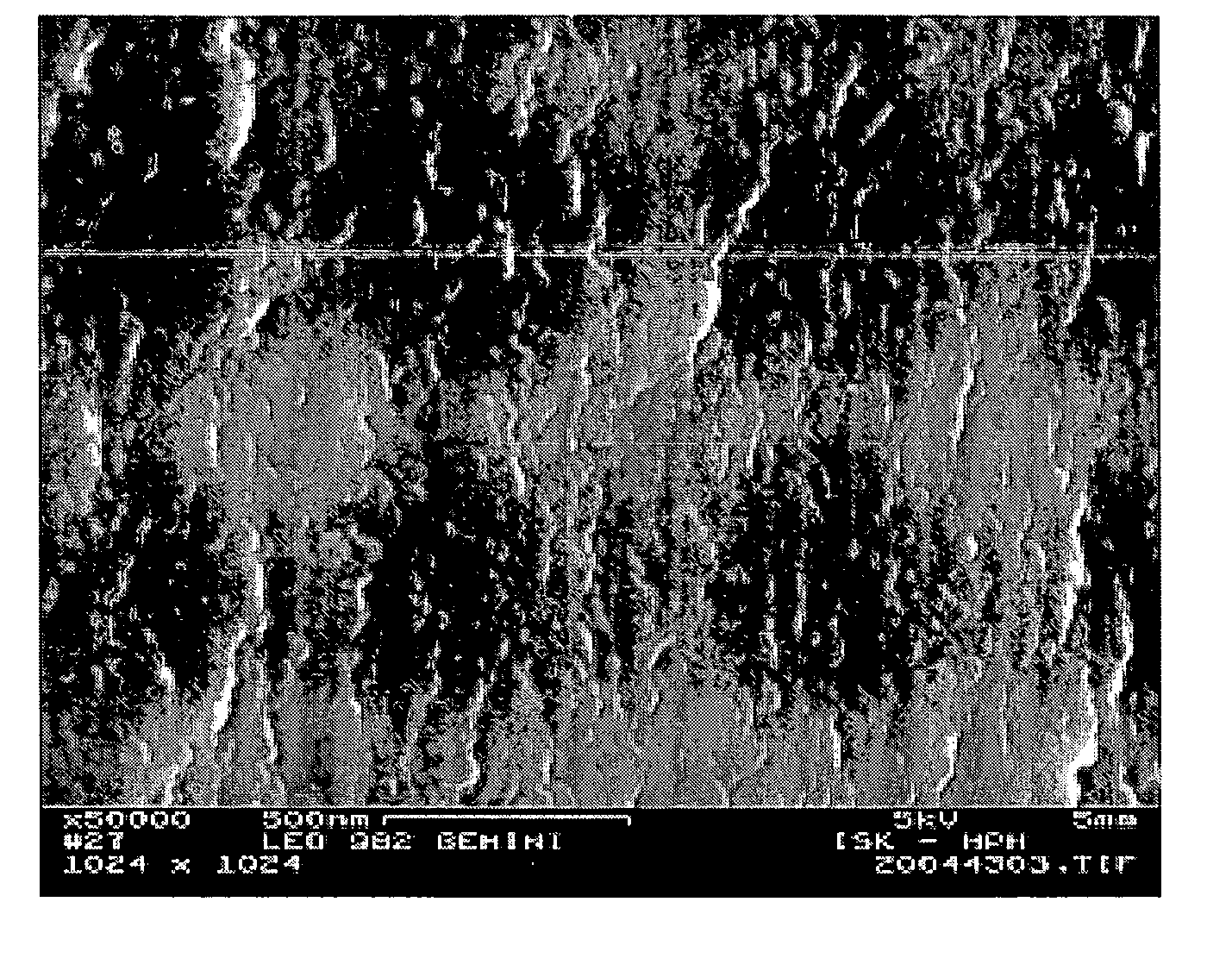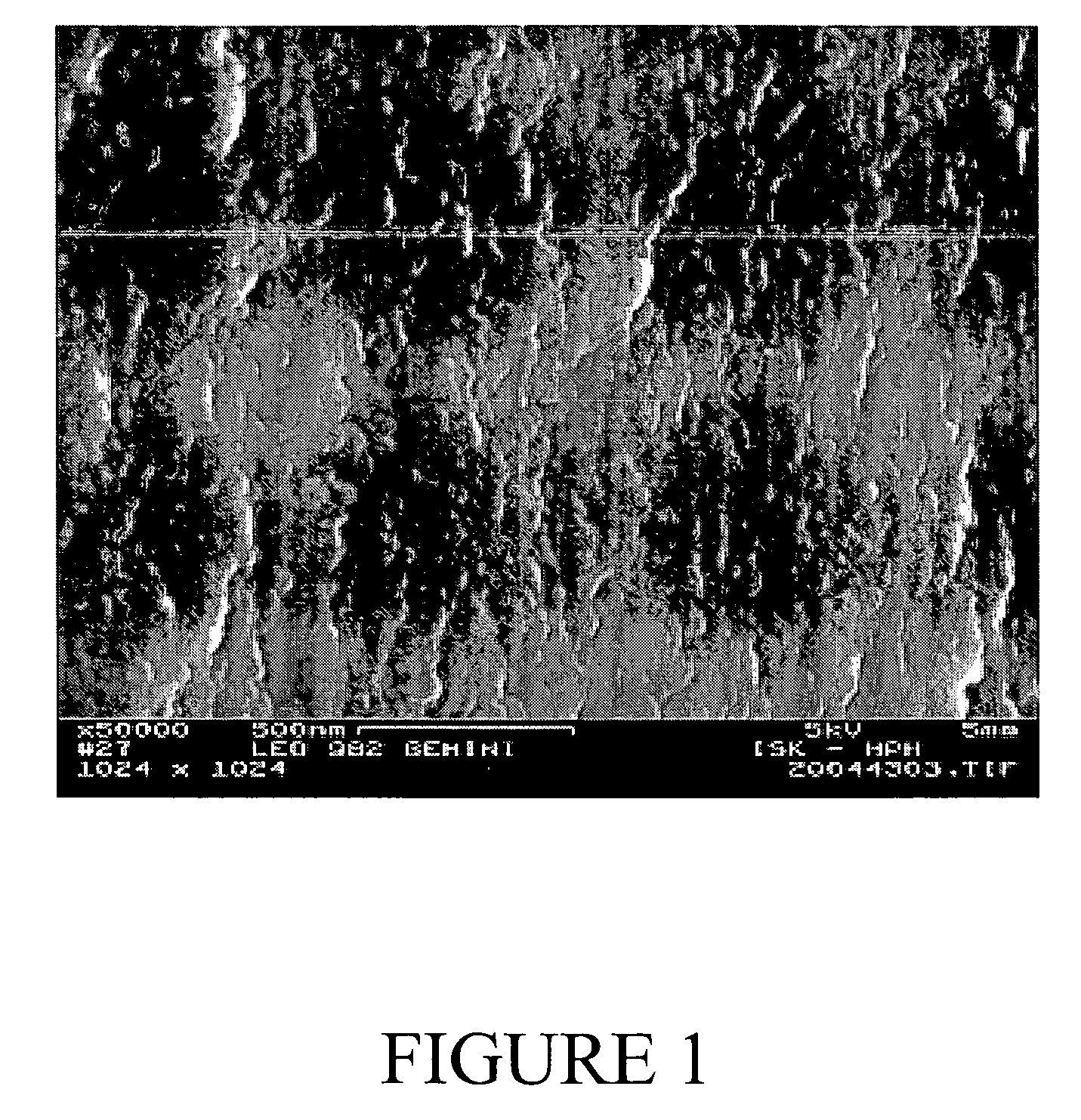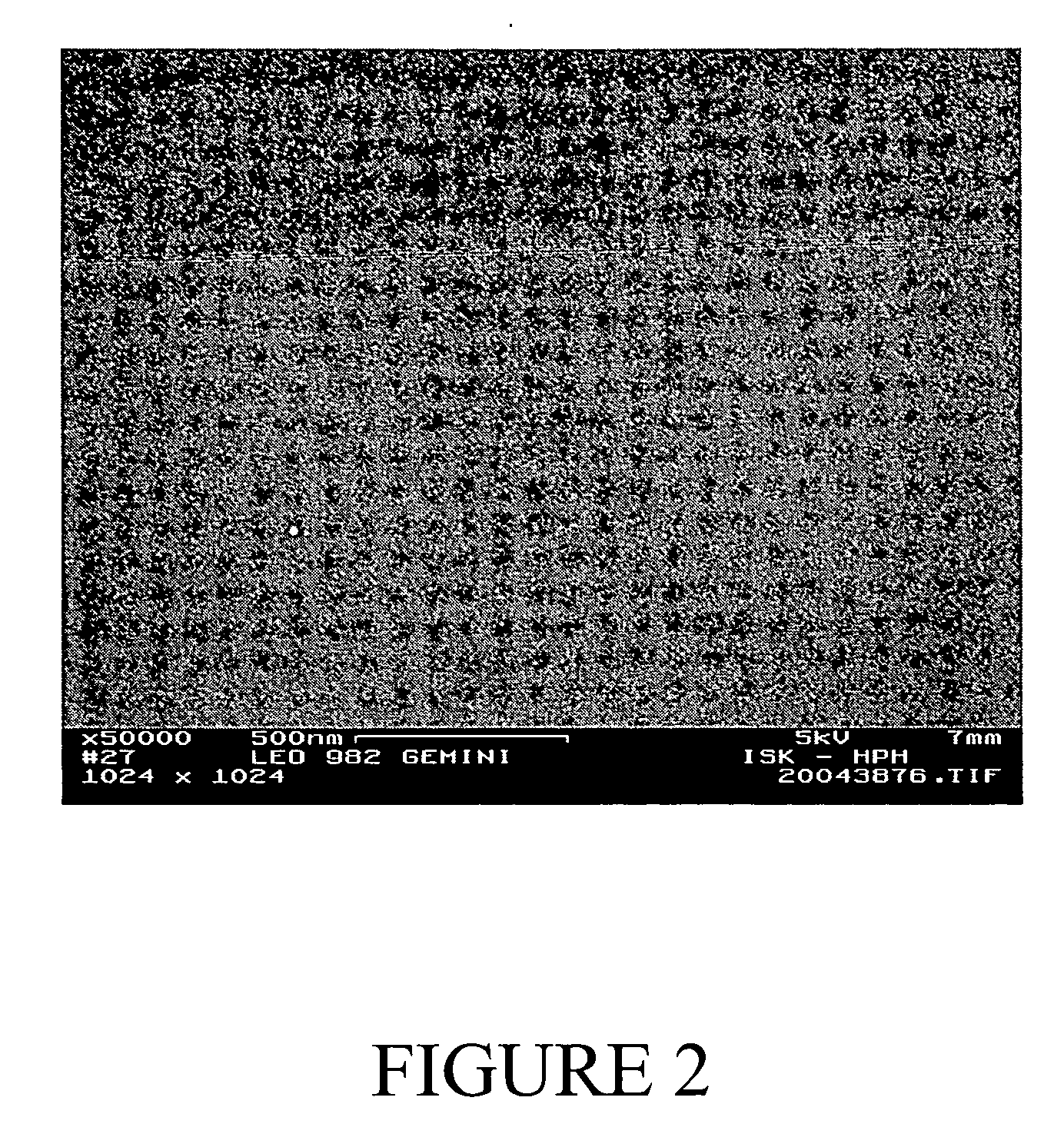Composite materials containing carbon nanoparticles
a technology of carbon nanoparticles and composite materials, which is applied in the direction of non-conductive materials with dispersed conductive materials, prosthesis, fullerenes, etc., can solve the problems of brittleness of materials, adversely affecting the properties of materials, and stress within formed materials
- Summary
- Abstract
- Description
- Claims
- Application Information
AI Technical Summary
Benefits of technology
Problems solved by technology
Method used
Image
Examples
example 1
Modification of the Carbon-Based Nanoparticle
[0101] 1 g of a fullerene mixture of C60 and C70 (Nanom-Mix, FCC, Japan) was mixed together with 99 g of 3-aminopropyl-trimethoxysilane (Dynasylan® AMMO, available from Degussa AG, Germany) in a water bath at 50° C. under continuous stirring (20 rpm) for 20 h to yield a red-brown liquid.
example 2
[0102] 2 g of the above-mentioned silane-modified fullerene liquid mixture was reacted with 0.5 g of TEOS (Dynasil® A, available from Degussa AG, Germany) and 0.5 g of concentrated H2SO4 and stirred (20 rpm) for approximately 4 h at room temperature, resulting in a homogeneous gel. Subsequently, 1.0 g of a phenoxy resin (Beckopox EP 401, UCB Solutia) and 22.5 g of MEK were added to the gel, to yield a dispersion. After applying the dispersion onto glass and steel substrates, the samples were each tempered at 300° C. for 30 minutes. The films were homogeneous, translucent and of yellowish color. The fullerene-containing samples exhibited a surface resistance of 109 Ohms, whereas the polymer film did not reveal any anti-static or conducting resistance. The films were scratch-resistant and elastic, whereby a 90° folding of the coated steel did not show any flaking or cracks within the film.
example 3
[0103] 4 g of the above-mentioned fullerene mix (Nanom, FCC) was stirred (20 rpm) with 16 g of 2-aminoethyl-3-aminopropyltrimethoxysilane (Dynasylan® DAMO, available from Degussa AG, Germany) at 50° C. for 20 h. 4 g of the resulting liquid mixture containing modified fullerene and residual silane was gelled with 1 g of concentrated HCl, 1 g Tween® 20 (surfactant), 0.5 g of water, and 1.0 g of a phenoxy resin (Beckopox EP 401, UCB Solutia). Thereafter, isophorondiisocyanat was slowly added. The resulting material was cured under ambient conditions at room temperature. FIG. 1 is an SEM picture (magnification 50,000×) of the surface of this gel, which reveals a very uniform distribution of the fullerene particles in the solid gel network.
[0104] The solid material was then carbonized oxidatively at 150° C. SEM analysis revealed a porous structure with an average pore size of 1 nm at the surface and cutting edge, as shown in FIG. 2. The specific surface area was revealed to be 4000 m2 / g...
PUM
| Property | Measurement | Unit |
|---|---|---|
| Temperature | aaaaa | aaaaa |
| Temperature | aaaaa | aaaaa |
| Fraction | aaaaa | aaaaa |
Abstract
Description
Claims
Application Information
 Login to View More
Login to View More - R&D
- Intellectual Property
- Life Sciences
- Materials
- Tech Scout
- Unparalleled Data Quality
- Higher Quality Content
- 60% Fewer Hallucinations
Browse by: Latest US Patents, China's latest patents, Technical Efficacy Thesaurus, Application Domain, Technology Topic, Popular Technical Reports.
© 2025 PatSnap. All rights reserved.Legal|Privacy policy|Modern Slavery Act Transparency Statement|Sitemap|About US| Contact US: help@patsnap.com



